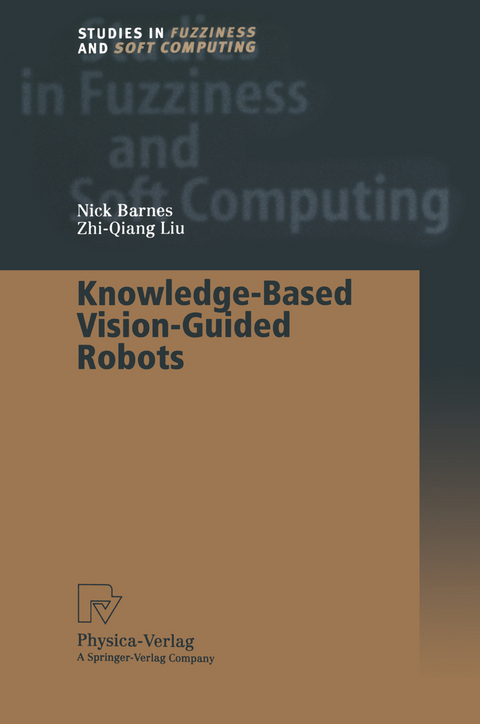
Knowledge-Based Vision-Guided Robots
Physica (Verlag)
978-3-662-00312-1 (ISBN)
1 Introduction.- 1.1 Background.- 1.2 Aims of the Research Presented in this Book: A Problem in Robot Vision.- 1.3 The Approach of this Book.- 1.4 About the Chapters.- 2 Related Systems and Ideas.- 2.1 Basic computer vision approaches.- 2.2 Vision-Guided Mobile Robot Systems.- 2.3 Computer Vision for Mobile Robots.- 2.4 Conclusion.- 3 Embodied Vision For Mobile Robots.- 3.1 Introduction.- 3.2 The Classical Computer Vision Paradigm.- 3.3 Problems with Classical Computer Vision.- 3.4 Applying Embodied Concepts in Human Vision.- 3.5 Embodiment of Vision-guided Robots.- 3.6 Embodiment for Vision-guided Robots.- 3.7 Conclusion.- 4 Object Recognition Mobile Robot Guidance.- 4.1 Introduction.- 4.2 System Perspective.- 4.3 Object Recognition.- 4.4 Determining Object Pose and Distance.- 4.5 Conclusion.- 5 Edge Segmentation and Matching.- 5.1 Edge Extraction.- 5.2 Edge Matching.- 6 Knowledge Based Shape from Shading.- 6.1 Introduction.- 6.2 Using Object Model Knowledge for Shape-From-Shading.- 6.3 A New Boundary Condition for Shape-From-Shading.- 6.4 Knowledge-based Implementation.- 6.5 Experimental Method and Results.- 6.6 Conclusion.- 7 Supporting Navigation Components.- 7.1 Model-based Path Planning.- 7.2 Odometry and Obstacle Avoidance Subsystem.- 8 Fuzzy Control for Active Perceptual Docking.- 8.1 Introduction.- 8.2 Direction Control for Robot Docking.- 8.3 A Fuzzy Control Scheme.- 8.4 Results.- 8.5 Conclusion.- 9 System Results and Case Studies.- 9.1 Evaluation of Components.- 9.2 Case Studies.- 9.3 Conclusion.- 10 Conclusion.- 10.1 Limitations of the Research Presented and Future Work.- 10.2 Extended quotation from Descartes.
| Erscheint lt. Verlag | 2.8.2012 |
|---|---|
| Reihe/Serie | Studies in Fuzziness and Soft Computing |
| Zusatzinfo | X, 212 p. 174 illus. |
| Verlagsort | Heidelberg |
| Sprache | englisch |
| Maße | 155 x 235 mm |
| Gewicht | 385 g |
| Themenwelt | Informatik ► Grafik / Design ► Digitale Bildverarbeitung |
| Informatik ► Theorie / Studium ► Künstliche Intelligenz / Robotik | |
| Schlagworte | algorithms • Cognition • computer vision • Control • embodied cognition • Fuzzy Control • Fuzzy Logic • Image Processing • knowledge base • Modeling • Navigation • Object recognition • perception • robot • Robotics |
| ISBN-10 | 3-662-00312-0 / 3662003120 |
| ISBN-13 | 978-3-662-00312-1 / 9783662003121 |
| Zustand | Neuware |
| Informationen gemäß Produktsicherheitsverordnung (GPSR) | |
| Haben Sie eine Frage zum Produkt? |
aus dem Bereich


